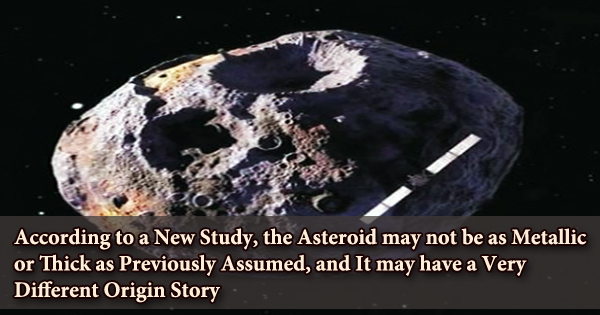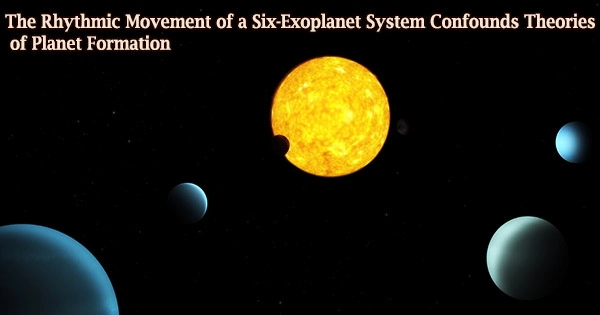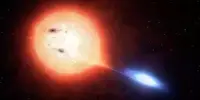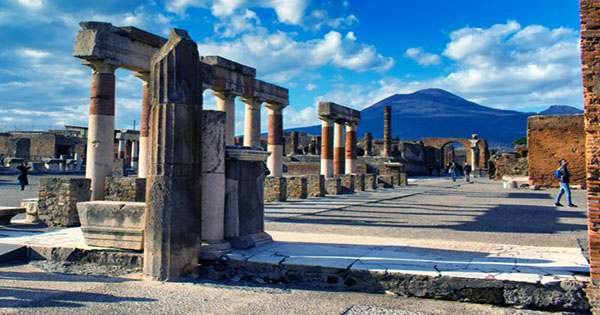16 Psyche, a well-studied metallic asteroid, was long considered to represent the exposed iron core of a tiny planet that failed to form during the solar system’s early days. However, a recent study performed by the University of Arizona shows that the asteroid may not be as metallic or dense as previously assumed, and suggests a very different genesis narrative.
Scientists are intrigued in 16 Psyche because, if its origins are correct, it will allow them to examine an exposed planetary core up close. NASA’s Psyche mission is set to launch in 2022 and arrive at the asteroid in 2026.
David Cantillo, a UArizona undergraduate student, is the primary author of a new study published on The Planetary Science Journal that claims 16 Psyche has 82.5 percent metal, 7% low-iron pyroxene, and 10.5 percent carbonaceous chondrite supplied by asteroids. 16 Psyche’s bulk density, also known as porosity, refers to how much empty space is present within its body, is estimated to be approximately 35 percent by Cantillo and his associates.
These figures vary from previous predictions of 16 Psyche’s composition, which suggested it might contain up to 95 percent metal and be significantly denser.
“That drop in metallic content and bulk density is interesting because it shows that 16 Psyche is more modified than previously thought,” Cantillo said.
It’s possible that it’s more like a debris pile than an entire exposed core of an early planet, comparable to another well-studied asteroid Bennu. The science mission team for NASA’s OSIRIS-REx mission, which collected a sample from Bennu’s surface and is now making its journey back to Earth, is led by the University of Arizona.
“Psyche as a rubble pile would be very unexpected, but our data continues to show low-density estimates despite its high metallic content,” Cantillo said.
Scientists believe that asteroid 16 Psyche, which is approximately the size of Massachusetts, contains around 1% of total asteroid belt material. It was the 16th asteroid ever found, discovered by an Italian astronomer on 1852.
“Having a lower metallic content than once thought means that the asteroid could have been exposed to collisions with asteroids containing the more common carbonaceous chondrites, which deposited a surface layer that we are observing,” Cantillo said.
The NASA Dawn mission also noticed this on the asteroid Vesta. The iron-rich asteroid 16 Psyche was previously estimated to be worth $10,000 quadrillion (that’s $10,000 followed by 15 more zeroes), but the latest results may reduce its value significantly.
“This is the first paper to set some specific constraints on its surface content. Earlier estimates were a good start, but this refines those numbers a bit more,” Cantillo said.
Bennu, the other well-studied asteroid, has a lot of carbonaceous chondrite material and a porosity of about 50%, which is a classic rubble pile feature. Because a weak gravitational field prevents the object’s rocks and boulders from being packed together too tightly, such high porosity is common for relatively tiny and low-mass objects like Bennu, which is only as large as the Empire State Building. But it’s surprising that a thing the size of 16 Psyche is so permeable.
“The opportunity to study an exposed core of a planetesimal is extremely rare, which is why they’re sending the spacecraft mission there,” Cantillo said, “but our work shows that 16 Psyche is a lot more interesting than expected.”
The composition of 16 Psyche has been estimated in the past by studying the sunlight reflected off its surface. The light pattern was similar to that of other metallic items. Instead, Cantillo and his colleagues mixed various materials in a lab and analyzed light patterns until they matched telescopic images of 16 Psyche’s regolith, or loose rocky surface material.
The UArizona Lunar and Planetary Laboratory and the Johns Hopkins Applied Physics Laboratory in Maryland, where Cantillo worked while in high school, are two of the few facilities in the world that use this approach.
“I’ve always been interested in space,” said Cantillo, who is also president of the UArizona Astronomy Club. “I knew that astronomy studies would be heavy on computers and observation, but I like to do more hands-on kind of work, so I wanted to connect my studies to geology somehow. I’m majoring in geology and minoring in planetary science and math.”
“David’s paper is an example of the cutting-edge research work done by our undergraduate students,” said study co-author Vishnu Reddy, an associate professor of planetary sciences who heads up the lab in which Cantillo works. “It’s also a great illustration of how my lab’s undergraduates, graduate students, postdoctoral fellows, and staff work together.”
The researchers also suspect that the carbonaceous material on 16 Psyche’s surface contains a lot of water, so they’ll combine data from ground-based telescopes and spacecraft missions to other asteroids to figure out how much water is there.















